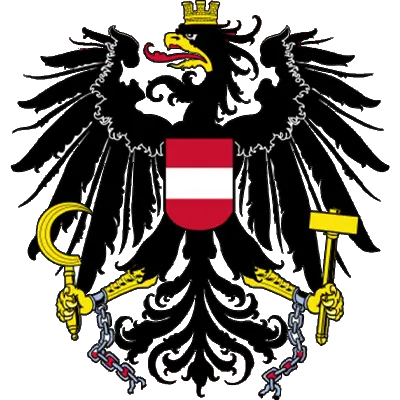Leopold V, Duke of Austria, participated in the Crusades in 1191. According to legend, he invented the flag after participating in the siege of Acre. After the battle, the duke took off his belt and saw that the fabric under the belt remained white, although the rest of the white cloak was covered with red blood. The red-white-red combination surprised him, and he used these colors on his flag. After the real banner of the Austrian duke was lost during a battle or stolen by King Richard the Lionheart of England, Emperor Henry VI allowed the Babenbergs to fly the red, white, and red banner as their new flag.
However, this legend cannot be substantiated historically. It is also difficult to establish how the Babenbergs got the so-called "Bindenschild" (red, white, and red coat of arms). There is speculation that the coat of arms came from the possessions of Count Waldwertel; other historians suggest that the shield and double-headed eagle came to the Babenbergs from the German Duchy of Swabia via Carinthia, Friuli, and Styria.
However, regardless of where the coat of arms actually originated and how it came to the Austrian dukes, historians know that the shield was used by the Austrian dukes from the mid-13th century at the latest. The earliest black-and-white image of the shield was made by Frederick II and is found on a document from the Lilienfeld Abbey in Lower Austria, dated 1230. The red, white, and scarlet colors were also first documented in writing two years later in Jan von Enickel's Fürstenburg. In it, the poet describes the solemn declaration of a young nobleman mature and capable of bearing arms in the knighthood of Duke Friedrich by Bishop Gebhard of Passau. On this occasion, 200 young nobles were dressed in red, white, and scarlet robes.









